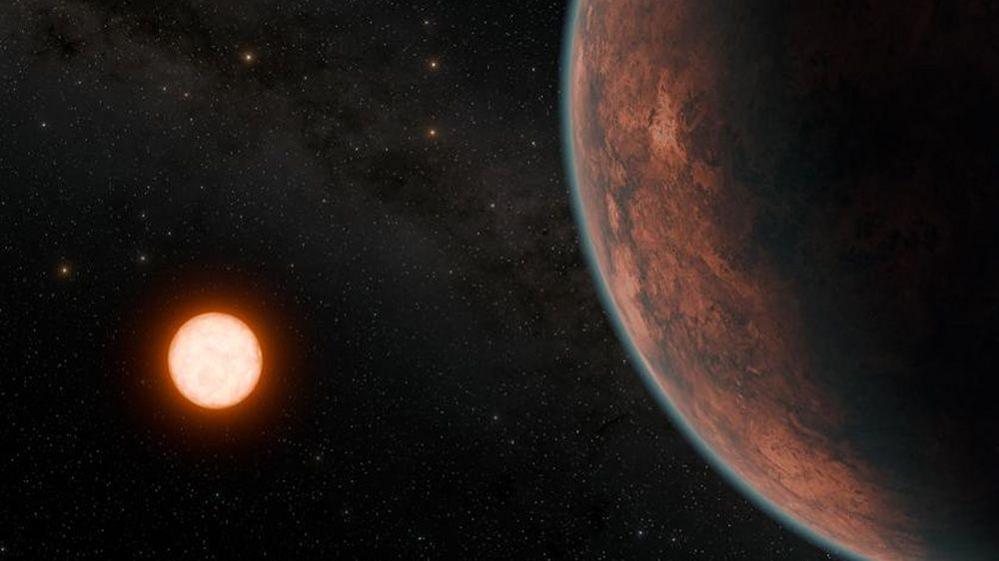Scientists wonder if Earth-like planet 'could support alien life'

This is an artist's version of what Gliese 12b could look like
- Published
A planet that could have similar conditions to Earth has been found 40 light years away.
Gliese 12b is about the size of Venus.
It's a lot cooler than other planets found outside of the solar system - just a few degrees warmer than Earth.
Scientists think a planet with these conditions could support alien life.
More like this:
- Published30 September 2023
- Published8 February
Exoplanets
Experts are searching the universe for planets like ours
Exoplanets are what scientists call planets outside of our solar system.
They're usually very hot, and often a lot bigger than our planet.
However, experts think Gliese 12b could be the right temperature to have some of the conditions needed for life - like water - on its surface.
Scientists are hoping to use the planet to learn more about other, maybe closer planets. Gliese 12b is pretty far away - 40 light years.
A light year is a measurement scientists use to explain how far away things in space are. It measures how long it takes light to travel to us from somewhere - so 40 light years means light takes 40 years to get to us.
Could Gliese 12b have alien life?
Here's the size of Earth compared to an artist's version of Gliese 12 b
Scientists reckon Gliese 12b could have conditions quite similar to Earth - which means... maybe!
The planet would be too hot for humans, though.
It's also a long way away, so instead of exploring the planet, they will probably use it to learn more about where else we can find habitable exoplanets.
How do we search for aliens?
Meet TESS - Nasa's planet-searching satellite
Nasa has a special satellite called TESS to look for alien life on exoplanets.
TESS stands for Transiting Exoplanet Survey Satellite - it looks for exoplanets and sends data back for scientists to look at.
Scientists look for a few things when searching for planets that could contain alien life.
The planet needs to be in an area known as the goldilocks zone - warm enough to hold life, but not too hot.
It also needs to be close enough in orbit to its nearest star, with a certain level of pressure in the atmosphere, and the right conditions for water.
Remember - we've got no idea what evdence of alien life could look like if we do find it.
Rather than little green people, scientists would be expecting microbes, bacteria or even fossils.
